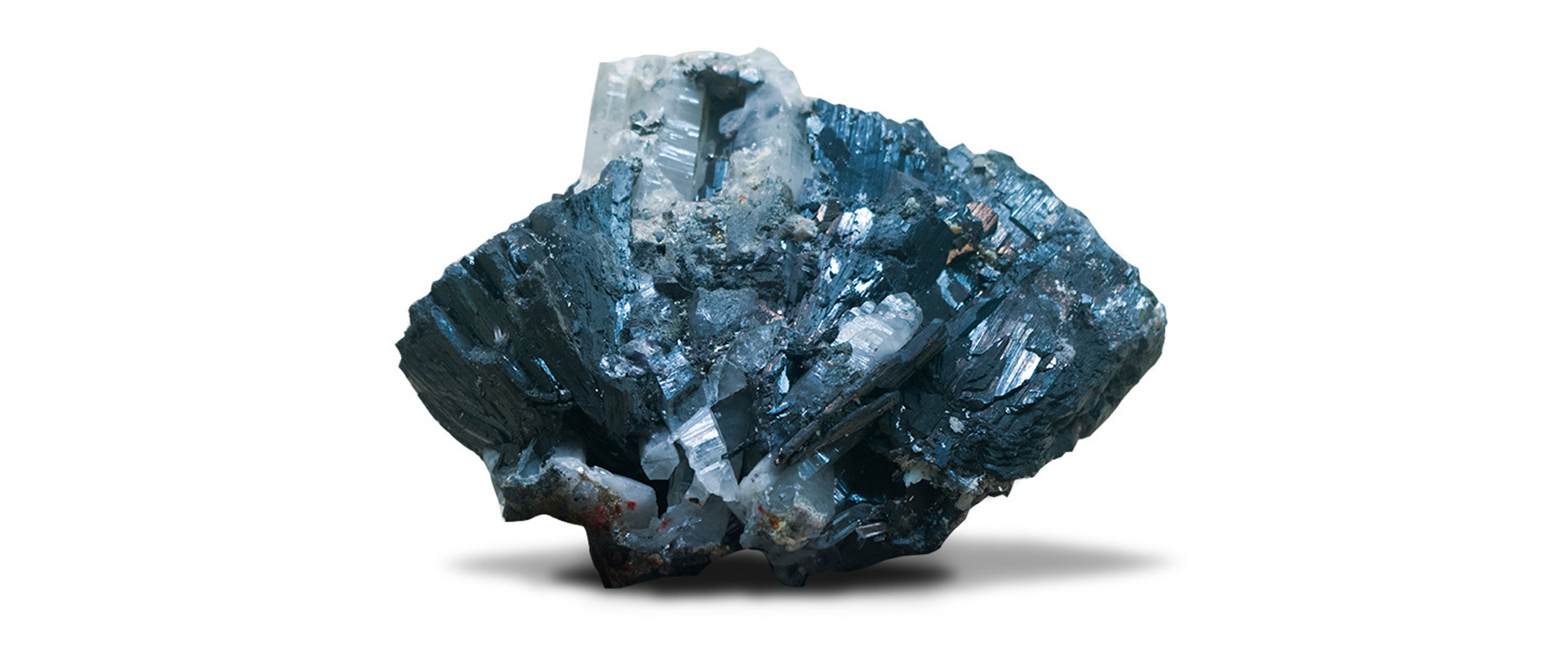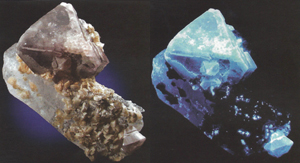
Characteristics of the raw material
The formation of the Pöhla-Globenstein deposit took involved several phases and favoured the formation of numerous assemblages. The deposit is an ore knot in the crossing of the depth fault Gera-Jáchymov inclining NW-SE and the depth fault in the Middle Ore Mountains inclining ENE-WSW up to NE-SW.
Within the deposit, 4 ore types can be distinguished (skarn ores, greisen ores, shales and decomposition ores).
In general, skarn ores form more or less lenticular ore bodies with banded arrangement in the skarn-meta-carbonaceous rock horizons while the greisen and decomposition ores often form irregular non-conformable bodies with irregular morphology in the skarn-meta-carbonaceous rock horizons.
Skarn ores show a complicated and very variable mineral norm (e.g. varieties of garnet-pyroxene-amphibole, magnetite, and pyroxene-amphibole-magnetite in the ore deposit 3). They are spatially bound to lithologic (dolomite/shale) and tectonic contacts (NE-SW to ENE-WSW inclining structures and those parallel to schistosity). The skarnitation intensity is very different in the individual ore deposits. Skarns are the main ore type of tin ores in the deposit and their main ore mineral is beside magnetite (which has a high tin content) also cassiterite. This is mostly crystalline. With grain sizes of 0.02–0.5 mm (e.g. in ore deposit 3 with a percentage of 67% to 69%), casserite can be found in rock mineral interparticles, partly also in form of submicroscopic aggregates (share of 13%) or finely dispersed in rock minerals (18% to 33%). Ore deposit 4 also contains tungsten skarn ores with the main tungsten mineral scheelite (grain size mostly 0.1 mm to 0.5 mm).
The skarn formation was sealed with an amphibole-magnetite mineralization with often closely arranged sulphides, first of all sphalerite.
Greisen ores contain mica, chlorite and fluorspar. Tectonically, they are often controlled by NE-SW to ENE-WSW inclining lodes/stringer leads and are, accordingly, arranged in lamellas (parallel to the Arnoldhammer and the Globenstein fault). In regard to the stringers which turn out to bring metasomatic alterations in the country rocks, three mineral associations can be distinguished: quartz-(albite-)casserite, quartz-fluorspar-scheelite, quartz-sulphide-hubnerite.

Diaphanous brown scheelite on greasy quartz with scattered light brown dolomite. In daylight (left) and under UV light (right). (Courtesy of John Betts Fine Minerals)
Scheelite is mostly intergrown with fluorspar and quartz (in the ore deposit 4 predominantly in a grain size of 0.02 mm to 1 mm, in the ore deposit 5 of about 1.9 mm) and occurs subordinated in quartz-sulphide-hubnerite aggregates. Greisen ores have rather high tin and tungsten contents (e.g. 0.64% tin in ore deposit 3), but only make up a minor share of the total deposit.


